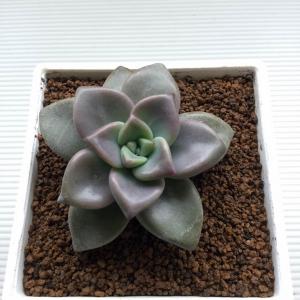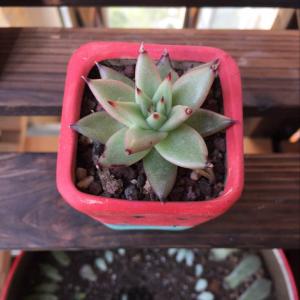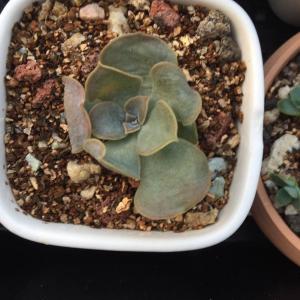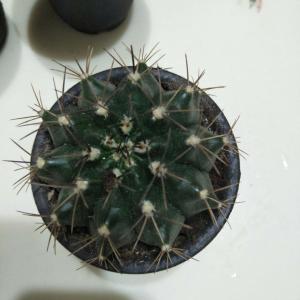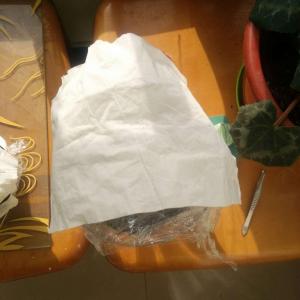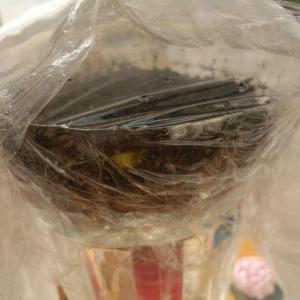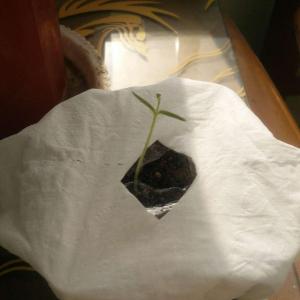文章
Miss Chen
2017年12月06日


独占春是附生植物;假鳞茎近梭形或卵形,长4-8厘米,宽2.5-3.5厘米,包藏于叶基之内,基部常有由叶鞘撕裂后残留的纤维状物。叶6-11枚,每年继续发出新叶,多者可达15 17枚,长57-65厘米,宽1.4-2. 1厘米,带形,先端为细微的不等的2裂,基部二列套叠并有褐色膜质边缘,边缘宽1-1.5毫米,关节位于距基部4-8厘米处。
独占春的花箭是直立或稍倾斜,常是一支花箭有两朵兰花,一前一后似两只燕子相伴展翅高飞。花箭高约30厘米,花朵硕大,其直径约10厘米,萼也长,瓣披长形,每边长约6厘米,宽2厘米,故属大型花。花色通常是白色,中脉淡黄,有丁香香味,但花香很淡。

独占春的花期
“双燕迎春”就是用来形容独占春的,从这两个名字中可以知道这经的花期便是春季,从2月开始。若养护得当的情况下,可以维持1个多月。花朵在盛开时犹如两只燕子要腾飞的样子。在广州,人们把独占春直接叫做“双飞燕”。它的花朵是白色的,有时会稍带些粉红色,非常的雅致,而且伴有幽香,整株植物姿态优美,清雅且高洁,是观赏中的上品。
冬天能开花吗
冬季可以开花。若它在冬季开花,我们伴着其幽香来观赏,是不是感觉冬季都不那么冷了。它原本的花期是春季开始,若想冬季让它提前开花得需要人为制造一些适合它开花的条件。
冬季开花的因素
低温:低温可以让它提前进入春化阶段,把温度控制在5度以上即可,大约20天左右,然后回到正常室温,这样冬季便可以开花。之前有朋友为了让它在冬季开花,提前把20天左右把它放进了7度左右的恒温箱中,冬季便顺利的开花了。
湿度:这一点也很重要,无论是春化阶段,还是开花阶段,都要维持一定的湿度。
温度:开花时应该把温度控制在15度以上,但不能超过30度(冬季室内一般都没有这么高温)。
0
0
文章
Miss Chen
2017年11月07日

Grapes (Vitis spp.) are sensitive to cold, with most varieties being winter hardy in U.S. Department of Agriculture plant hardiness zones 6 through 9. But some grape varieties can stand up to a Michigan winter, at least in the southern part of the state. The key to successfully growing grapes in Michigan is to look for cultivars whose tolerance for cold matches the winter conditions in your part of the state.

Regional Differences
Of all the areas of the state, the part of Michigan that's best for growing grapes is the area along the Lake Michigan shoreline. The prevailing winds blowing across the lake moderate temperatures, keeping the area warmer in the winter and cooler in the summer, and grapes appreciate the relief from both the winter cold and the summer heat.
Other lakeshore areas may also have climates that will support grape growing. In inland parts of the southern lower peninsula, growing grapes is more of a challenge, and it's probably not possible in the northern lower peninsula or the upper peninsula.
If you intend to grow grapes inland or in areas as far north as Muskegon or Saginaw Bay, look for grape varieties that are labeled as hardy.

Table Grapes
Among white seedless table grape varieties, "Marquis" (Vitis "Marquis," USDA zones 5 through 9) is a good choice for a home garden. "Kay Gray" (Vitis "Kay Gray," USDA zones 4 through 8) and "Edelweiss" (Vitis "Edelweiss," USDA zones 4 through 8) are white, seeded varieties that are exceptionally hardy and may withstand harsher inland winters.
"Buffalo" (Vitis "Buffalo") is a blue, seeded table grape variety that does well in traditional fruit-growing areas, and "Steuben" (Vitis "Steuben") is a blue that will grow throughout the southern lower peninsula. Both of these grapes are hardy in USDA zones 5 through 9. "Swenson Red" (Vitis "Swenson Red," USDA zones 4 through 8) is a hardy red, seeded variety that will also grow well in the southern half of the lower peninsula.
Hybrid Wine Grapes
The wine grape varieties most commonly grown in Michigan are hybrids of French varieties and various native American species. The development of some of these cultivars has focused on cold hardiness, and that makes them good choices for growing in Michigan.
White wine varieties that do well in the state include "Cayuga White" (Vitis "Cayuga White"), "Chardonel" (Vitis "Chardonel"), "Seyval Blanc" (Vitis "Seyval Blanc"), "Traminette" (Vitis "Traminette") and "Vignoles" (Vitis "Vignoles"), all of which grow in USDA zones 5 through 9. "Vidal Blanc" (Vitis "Vidal Blanc") is somewhat less hardy and is suitable for USDA zones 5b through 9.
Red hybrid wine varieties that are suitable for Michigan are less numerous -- "Baco Noir" (Vitis "Baco Noir," USDA zones 6a through 9) is the most commonly grown.
American Grape Varieties
The labrusca grape species (Vitis labrusca) is native to eastern North America, and it is known for its musky aroma. Two labrusca varieties, the blue "Concord" (Vitis labrusca "Concord," USDA zones 5 through 9) and the white "Niagara" (Vitis labrusca "Niagara," USDA zones 5 through 9), can also be grown in Michigan, but their strong flavors limit their appeal as wine grapes.

Regional Differences
Of all the areas of the state, the part of Michigan that's best for growing grapes is the area along the Lake Michigan shoreline. The prevailing winds blowing across the lake moderate temperatures, keeping the area warmer in the winter and cooler in the summer, and grapes appreciate the relief from both the winter cold and the summer heat.
Other lakeshore areas may also have climates that will support grape growing. In inland parts of the southern lower peninsula, growing grapes is more of a challenge, and it's probably not possible in the northern lower peninsula or the upper peninsula.
If you intend to grow grapes inland or in areas as far north as Muskegon or Saginaw Bay, look for grape varieties that are labeled as hardy.

Table Grapes
Among white seedless table grape varieties, "Marquis" (Vitis "Marquis," USDA zones 5 through 9) is a good choice for a home garden. "Kay Gray" (Vitis "Kay Gray," USDA zones 4 through 8) and "Edelweiss" (Vitis "Edelweiss," USDA zones 4 through 8) are white, seeded varieties that are exceptionally hardy and may withstand harsher inland winters.
"Buffalo" (Vitis "Buffalo") is a blue, seeded table grape variety that does well in traditional fruit-growing areas, and "Steuben" (Vitis "Steuben") is a blue that will grow throughout the southern lower peninsula. Both of these grapes are hardy in USDA zones 5 through 9. "Swenson Red" (Vitis "Swenson Red," USDA zones 4 through 8) is a hardy red, seeded variety that will also grow well in the southern half of the lower peninsula.
Hybrid Wine Grapes
The wine grape varieties most commonly grown in Michigan are hybrids of French varieties and various native American species. The development of some of these cultivars has focused on cold hardiness, and that makes them good choices for growing in Michigan.
White wine varieties that do well in the state include "Cayuga White" (Vitis "Cayuga White"), "Chardonel" (Vitis "Chardonel"), "Seyval Blanc" (Vitis "Seyval Blanc"), "Traminette" (Vitis "Traminette") and "Vignoles" (Vitis "Vignoles"), all of which grow in USDA zones 5 through 9. "Vidal Blanc" (Vitis "Vidal Blanc") is somewhat less hardy and is suitable for USDA zones 5b through 9.
Red hybrid wine varieties that are suitable for Michigan are less numerous -- "Baco Noir" (Vitis "Baco Noir," USDA zones 6a through 9) is the most commonly grown.
American Grape Varieties
The labrusca grape species (Vitis labrusca) is native to eastern North America, and it is known for its musky aroma. Two labrusca varieties, the blue "Concord" (Vitis labrusca "Concord," USDA zones 5 through 9) and the white "Niagara" (Vitis labrusca "Niagara," USDA zones 5 through 9), can also be grown in Michigan, but their strong flavors limit their appeal as wine grapes.
0
0
文章
Miss Chen
2017年11月02日

Perennial strawberries (Fragaria × ananassa) are perennials that grow in U.S. Department of Agriculture plant hardiness zones 3 through 10. They grow best and accept plant nutrients in soil that has a pH from 5.5 to 6.

Strawberry types are divided among June-bearing varieties that yield one large crop in June, day-neutral varieties that yield strawberries throughout the growing season, and everbearing varieties that yield a June crop and one in early autumn. All three types are fertilized the same way at the start of the growing season. Day-neutral and everbearing have added needs during the summer.
Soil Amendments
More than three-fourths of strawberry roots are found in the top six inches of soil. If you have your soil tested and find minerals that are below the optimal level, work soil amendments into the top 6 to 8 inches of soil six months to one year before you plant your strawberries.
If your soil needs potassium, apply 1 1/2 cups of potassium chloride, 0-0-60, or potassium sulfate, 0-0-43, per 100 square feet of strawberry growing soil. Potassium sulfate is acceptable for organic gardeners. Mixing 14 cups of greensand to each 100 square feet is also acceptable for organic potassium. Greensand, mined from mineral deposits originally on the ocean floor, contains 3 percent potassium along with iron, magnesium, silica and other trace minerals.
If your soil lacks phosphorus, combine 2 1/2 cups of superphosphate, 0-20-0, or 1 cup of triple superphosphate, 0-46-0 to 100 square feet of soil. For organic phosphorus add 6 cups of bonemeal, 1-11-0, to 100 square feet.

Strawberries commonly suffer from a lack of boron in the soil. If no boron was added in the previous three to four years, mix 3/4 ounce of borax into a gallon of water and shake thoroughly. Spread this over 100 square feet of strawberry planting area, taking care not to apply too much. If you regularly amend your soil with compost, it should contain sufficient organic boron.
Growing Season Fertilizer
Two weeks before you plant strawberries, mix 2 pounds of water-soluble, granular 5-10-10 fertilizer into the top 6 to 8 inches of 100 square feet of soil.
Add fertilizer to newly planted strawberries in 6-inch bands on both sides of the rows. Use water-soluble, granular fertilizer and water well after application.
Six to eight weeks after planting, apply 1 pound of water-soluble, granular 5-10-10 fertilizer per 100 square feet of soil. If granules land on the strawberry leaves, knock them off with your hand or wash them off.
Adding nitrogen fertilizer in the spring before harvest may increase plant and berry diseases and cause excessive growth of stems and leaves. But if your plants are growing slowly and the leaves are light green, add 1/2 pound of 5-10-5 per 100 square feet of soil.
After harvesting June-bearing strawberries, remove weeds, cut back leaves and thin plants. Then add 1 to 2 pounds of 10-10-10 fertilizer per 100 square feet of soil in 6-inch bands beside the plants. Give the plants at least 1 inch of water per week to avoid salt injury from the fertilizer and to give the strawberries strong, new growth. One inch of water is roughly 6 gallons per square yard.
If your strawberries are growing in soil that has not been allowed to dry out, fertilize them again in late august with 1/2 pound of 10-10-10 fertilizer for each 100 square feet of soil.
Apply 1 pound of 10-10-10 fertilizer to 100 square feet of everbearing and day neutral strawberries in the middle of June and July and at the end of August.
Organic Fertilizers
Organic nutrients for strawberries are best added before they are planted, rather than later.
If you have time, plant oats in the area where you then plow them under a few weeks before you plant strawberries. The decaying oats will add nutrients to the soil.
Early spring is also when you should add 35 pounds of rabbit or poultry manure or 65 pounds of cow manure into the top 6 to 8 inches of 100 square feet of soil.

Strawberry types are divided among June-bearing varieties that yield one large crop in June, day-neutral varieties that yield strawberries throughout the growing season, and everbearing varieties that yield a June crop and one in early autumn. All three types are fertilized the same way at the start of the growing season. Day-neutral and everbearing have added needs during the summer.
Soil Amendments
More than three-fourths of strawberry roots are found in the top six inches of soil. If you have your soil tested and find minerals that are below the optimal level, work soil amendments into the top 6 to 8 inches of soil six months to one year before you plant your strawberries.
If your soil needs potassium, apply 1 1/2 cups of potassium chloride, 0-0-60, or potassium sulfate, 0-0-43, per 100 square feet of strawberry growing soil. Potassium sulfate is acceptable for organic gardeners. Mixing 14 cups of greensand to each 100 square feet is also acceptable for organic potassium. Greensand, mined from mineral deposits originally on the ocean floor, contains 3 percent potassium along with iron, magnesium, silica and other trace minerals.
If your soil lacks phosphorus, combine 2 1/2 cups of superphosphate, 0-20-0, or 1 cup of triple superphosphate, 0-46-0 to 100 square feet of soil. For organic phosphorus add 6 cups of bonemeal, 1-11-0, to 100 square feet.

Strawberries commonly suffer from a lack of boron in the soil. If no boron was added in the previous three to four years, mix 3/4 ounce of borax into a gallon of water and shake thoroughly. Spread this over 100 square feet of strawberry planting area, taking care not to apply too much. If you regularly amend your soil with compost, it should contain sufficient organic boron.
Growing Season Fertilizer
Two weeks before you plant strawberries, mix 2 pounds of water-soluble, granular 5-10-10 fertilizer into the top 6 to 8 inches of 100 square feet of soil.
Add fertilizer to newly planted strawberries in 6-inch bands on both sides of the rows. Use water-soluble, granular fertilizer and water well after application.
Six to eight weeks after planting, apply 1 pound of water-soluble, granular 5-10-10 fertilizer per 100 square feet of soil. If granules land on the strawberry leaves, knock them off with your hand or wash them off.
Adding nitrogen fertilizer in the spring before harvest may increase plant and berry diseases and cause excessive growth of stems and leaves. But if your plants are growing slowly and the leaves are light green, add 1/2 pound of 5-10-5 per 100 square feet of soil.
After harvesting June-bearing strawberries, remove weeds, cut back leaves and thin plants. Then add 1 to 2 pounds of 10-10-10 fertilizer per 100 square feet of soil in 6-inch bands beside the plants. Give the plants at least 1 inch of water per week to avoid salt injury from the fertilizer and to give the strawberries strong, new growth. One inch of water is roughly 6 gallons per square yard.
If your strawberries are growing in soil that has not been allowed to dry out, fertilize them again in late august with 1/2 pound of 10-10-10 fertilizer for each 100 square feet of soil.
Apply 1 pound of 10-10-10 fertilizer to 100 square feet of everbearing and day neutral strawberries in the middle of June and July and at the end of August.
Organic Fertilizers
Organic nutrients for strawberries are best added before they are planted, rather than later.
If you have time, plant oats in the area where you then plow them under a few weeks before you plant strawberries. The decaying oats will add nutrients to the soil.
Early spring is also when you should add 35 pounds of rabbit or poultry manure or 65 pounds of cow manure into the top 6 to 8 inches of 100 square feet of soil.
0
0










